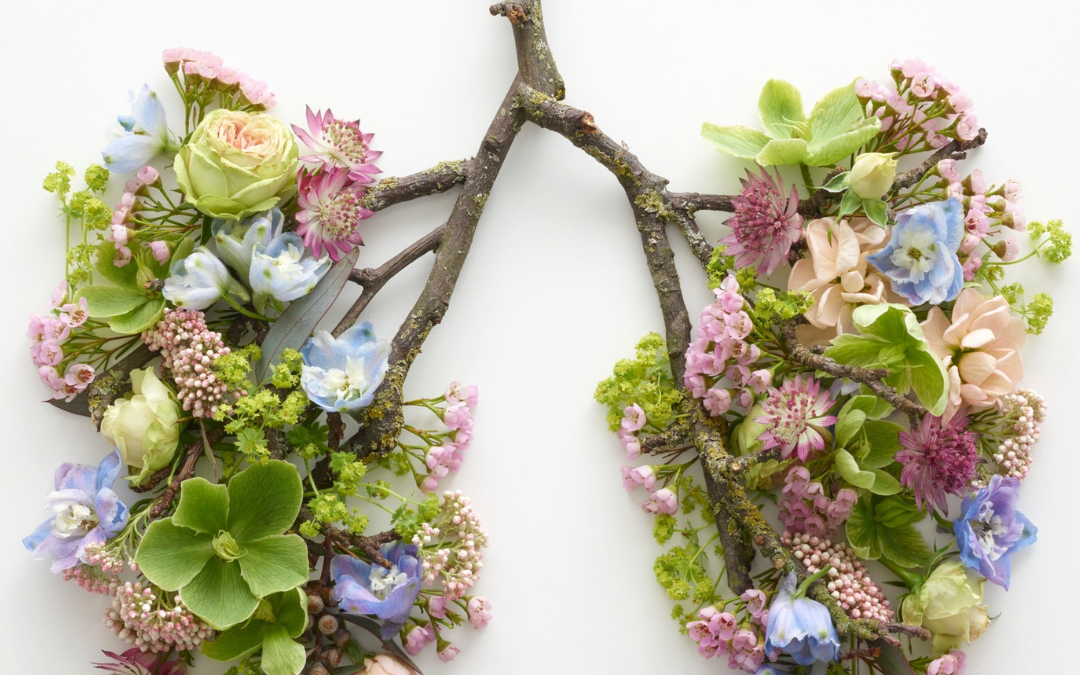Finding the most effective breath-work remedies out there might be confusing at first but is well worth your time.
Our breath is the quickest way for us to get fresh Prana (or life-force) into our bodies. “Pranayama” – different techniques of breath control, which originated from ancient yogic practices, is gaining more and more momentum in modern day society.
Breathing is happening always. It’s free. It’s always available (and accessible).
We all do it anyway, so we might as well do it right 😉 Let’s explore the world of breath-work remedies a little, shall we?
Today I’m chatting with Cate Terry – she’s a yoga teacher specialising in breath work, menopause and gentle asana which she shares in person and on her BlissFull membership platform. She was a school teacher before retraining as a yoga teacher and loves meeting new people, learning their stories and sharing yoga and holistic health with everyone.
Cate, what brought you to the world of pranayama?
Cate: I struggled with anxiety as a young adult and found I used to hold my breath a lot. When I spoke to medical experts they were more used to people hyperventilating and it made me curious about why I breathed the way I did and how the breath can have such an impact in these situations.
When I did my yoga teacher training 10 years ago I have to admit that pranayama didn’t get as much of my attention as I would have liked.
It seemed to be an optional extra as much of the training was focused on the asana, anatomy and the history of yoga.
These are all important but I feel like Pranayama is so universal that I wish it had been more centre-stage in my earlier classes.
As I have journey through life learning about yoga, Ayurveda and Pranayama it is Pranayama I return to when I am looking for.. that something I know is missing…but perhaps I cannot access a yoga mat etc. whereas the breath is always there and is a fantastic focus when other things in life can feel like they are out of control.
It’s wonderful to be able to bring a sense of calm with just a few minutes focus on the breath.
What changes did you notice in yourself as you dove deeper into different breathing practices?
Cate: On a personal level I noticed the impact almost immediately, particularly when slowing down the breath and focusing on that as a way to regulate my nervous system.
It makes me a better mother, wife, friend and daughter when I have made the time for myself.
In my classes, it has been fascinating to see people try different practices and find their own way to use and benefit from them.
For example, Lion’s Breath is one that a group can find a bit intimidating at first but after a few rounds they seem to become more liberated and free.
What changes are you noticing in your clients as they start practicing pranayama?
Cate: Clients often find pranayama quite intimidating at first, so often I use non-Sanskrit names as a way of helping them to access the practices before wearing in Yoga philosophy and names later on.
Since we are all breathing in and out without much thought, it can be alarming to some to start altering their breath and playing with holding the breath.
However, with practice and guidance many people report back that their Pranayama practice is very soothing and has had an impact on lots of facets of their lives.
It feels good to them to take control and feel the difference in their own body.
What are the best breathing practices for each Ayurvedic body type?
Cate: Vata can need to be brought back down to earth or calmed so breath practices the bring balance and require focus are perfect, such as Alternate Nostril (Nadi Shodhana) breathing.
Pitta in excess can be fiery and hot so cooling breath practices are useful to bring a soothing coolness to the body such as Taco (Sitali) breath where you roll your tongue (or with the mouth slightly open if you cannot roll your tongue). Take slow breaths in through the mouth, exhale through the nose. Repeat for 10 rounds.
Kapha energy can bring a feeling of lethargy and so to balance this there is a need to get active and moving. An ideal option for Kaphas is Bellows (Bhastrika) breath to fire up the body and get things going! This is helpful for Kaphas who struggle to get up in the morning. This one is best taught by a teacher as it can be confusing and needs care and attention to avoid overdoing it.
Which breath-work remedies would you advise as the most effective for people who suffer from lack of sleep?
Cate: Any breath where the exhale is slower than the inhale. For example inhale for 4, exhale for 8.
You can play around with the ratios to suit you but slowing the breath down affects the vagus nerve because the diaphragm is moving; this movement stimulates the parasympathetic nervous system which has a calming effect on the body.
With practice this happens with ease and is a great way to encourage the body to settle and wind down ready for sleep.
Vytaute: for extra support, you can accompany your evening pranayama practice with this Ayurvedic evening sleep tonic. Feeling inspired? Discover more Ayurveda’s tips for a supportive evening routine here.
Thank you Cate!
Want to find out more about Cate’s work? Connect with her on Instagram, visit her website www.cateterry.co.uk or check out her new platform BlissFull on https://blissfull.teachable.
See you soon!
With love,
Vytaute

